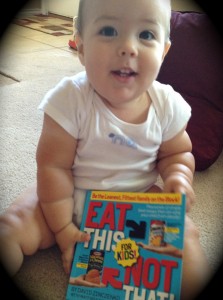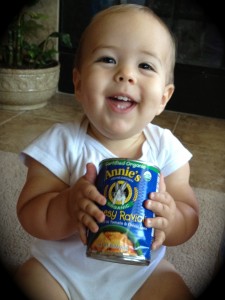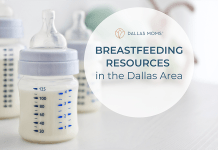I like to consider myself pretty “up” on all things healthy. I’m a fitness instructor, and I have taken continuing education courses in nutrition and diet. Aside from that, I’ve been on diets of every variety since I was 15 years old. I know how to read a nutrition label. I know about counting calories and fat grams. I know how to figure out what is healthy and what is not healthy, right?

That’s why I’m really embarrassed to tell you how shocked, amazed and appalled I was when I read a little book called, Eat This Not That: For Kids by David Zinczenko. I was in line at Kohl’s (the little book is on their $5 Kohls Cares for Kids display) and it caught my eye.
I had no intention of buying it though. I know how to feed my kids well. I know what’s healthy and what’s not healthy. Or at least I thought I did. I just had a few minutes in line so I thought I’d open it up as a time killer. Seconds later, after I picked my jaw up off of the ground, I promptly handed this little find to the cashier.
Apparently, all of my nutrition knowledge and label-reading skills disappeared when hungry children came under my care. I’ll confess. I have succumbed on more than one occasion to a blue box of macaroni and cheese shaped like Lightening McQueen. I have justified pepperoni pizza as “mostly protein” and a legitimate part of a growing child’s weekly diet. And, I have allowed my children to order the quesadilla (which I believe is a staple of every restaurants’ kids’ menu in North Texas) hundreds of times.
But, I thought that I was doing okay. I get my kids to eat a few stalks of broccoli a week and a banana a day. Sometimes I even juice…like with a juicer and green vegetables. Yet apparently I was missing the boat when it came to the processed and restaurant foods that we do have at least once or twice a week.
The book has three main sections. Part one takes you through “Nutrition 101” with some rules for better eating (don’t skip breakfast, watch out for hidden sugar and calories in things like juice, etc…) and some info on the food groups, and the nutritional break down of different whole foods (categorized by color). This section also includes the 20 worst kids’ foods in America list (Cap’n Crunch gets the prize for worst breakfast cereal here and Oscar Mayer’s Lunchables score a big old “stay away” as well.)
Part two takes you on a mini-tour of 40 different restaurants’ kids’ menus. This is where your jaw will drop, if, like me, you start to see familiar dishes named on the worst list. Among the most shocking to me were the following:
Ruby Tuesday’s Kids Turkey Minis & Fries: You probably think “turkey” burgers means healthy burgers– alas, 893 calories and 47 grams of fat hardly sounds like it, eh?
On the Border’s Kids’ Beef Soft Taco Mexican Dinner (with rice and refried beans): I was stunned by how horrible this tiny little taco and sides combo actually was with 840 calories, 35 grams of fat and, gulp, 2,760 mg of sodium (Enough to preserve a small city according to the author).
Chili’s Pepper Pals Country-Fried Chicken Crispers (with ranch and fries): Great choice if you want your kid to have 1,110 calories, 82 grams of fat and 1980 mg of sodium in just one dinner.

And the book goes on, and on, and on…Chick fil A, Chuck E Cheese, Dairy Queen, P.F. Chang’s, Red Lobster, Olive Garden, Panera Bread, Outback Steakhouse…If it’s a restaurant with a logo you’d recognize, it’s on one of these square pages.
The good news is author David Zinczenko does a great job of pointing out great, healthier alternatives that can be found at these restaurants and others he critiques. I was shocked to find out that at Chili’s one of the healthiest “kid friendly” meals was actually the corn dog. Who would have guessed that? And, my kids’ quesadillas…Well, they didn’t make it on to the “eat this” list one time.
The rest of the book offers some general dining out tips to help you make better choices for your children in non-chain restaurants or ones not reviewed in his book. It also includes a shopping guide for making good choices while at the grocery store, along with some recipes and fitness ideas just for kids.
Obesity and related diseases are now more prevalent in American children than ever before. And, after reading this book, you will be even more aware of how and why that is happening.
I’d love to say that I’m the “whole foods only” mom — that my kids eat spinach for breakfast and would pick a pear over a popsicle if given the choice. But, that’s just not true. So, I try to do my best and keep things in balance. And, now, thanks to what I’ve learned from this little book, I think I’ll be able to do that even better.
**The pleasure of sharing this information with you is the only compensation I’ve received for this book review.














Great info! Thanks so much for recommending! I’m a little scared to read this and find out what I’ve been doing wrong, but I’ll definitely be picking it up!